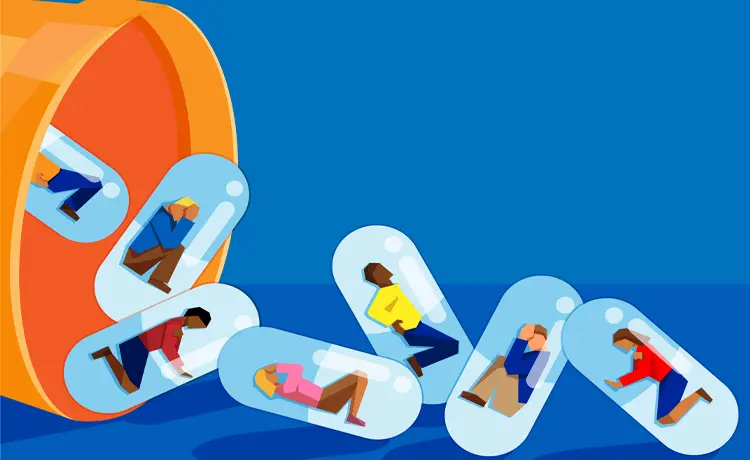The opioid crisis affects millions of Americans and takes the lives of thousands every year. While opioids can be prescribed by doctors, millions of people misuse them, often leading to life-threatening addiction. Learn more about the opioid epidemic and how to prevent addiction and overdose by reading the following facts and tips.
What are opioids?
Opioids are a type of drug that include oxycodone, fentanyl, buprenorphine, methadone, oxymorphone, hydrocodone, codeine and morphine. Some opioids are illegal drugs, such as heroin. These drugs act in the nervous system to produce powerful feelings of pleasure and pain relief. As a result, they are highly addictive. Opioids are very dangerous, as they have the ability to change the chemistry of the brain over time; people who take opioids will need to increase their doses over time to receive the same effects. In addition, people who stop taking opioids after developing a dependence on them experience extreme symptoms of withdrawal, such as muscle cramping, diarrhea and anxiety. To learn more about opioids and other drugs, see the QuickSeries® guide Drug Awareness.The U.S. Opioid Epidemic
In the U.S., addiction to opioids has become a widespread problem, but it started decades ago. In the 1990s, health care providers prescribed opioids frequently because pharmaceutical companies claimed that opioid pain relievers did not cause addiction in patients. However, this was not true. The increased prescription of opioids coupled with their misuse led to a widespread issue. Misuse can include taking opioids that have been prescribed for someone else, taking opioids differently than prescribed or taking them to get high. In 2017, the U.S. Department of Health and Human Services declared the opioid crisis as a nationwide public health emergency that needed to be addressed. The current administration is trying to decrease the overprescription of opioids and spread awareness about the risks associated with this class of drug.How to Prevent Opioid Addiction and Overdose
Addiction causes you to compulsively seek out drugs even though they cause you harm. The most effective way to avoid opioid addiction is to use the medication as it has been prescribed to you (and only if it has been prescribed to you). Misuse of opioids can lead to dependence, which could in turn result in an addiction. Seek help if you or someone you know has an opioid addiction. Visit SAMHSA's opioid treatment program directory to find help near you. Sometimes it is difficult to differentiate between someone who is high and someone experiencing an overdose. When people overdose on an opioid medication, their breathing often slows or stops. This can decrease the amount of oxygen that reaches the brain which can result in coma, permanent brain damage or death. If you notice the following symptoms of an opioid overdose, call 911 immediately:- Extremely pale and/or clammy skin
- Body is very limp
- Fingernails or lips have a blue or purplish black color
- Inability to speak
- Loss of consciousness
- Breathing or heartbeat slows or stops
- Vomiting
- Choking or gurgling noises
For more information on various Health & Wellness products available to purchase for your community, browse the QuickSeries® library of guides.The best way to prevent an overdose is to get help before the addiction progresses.
